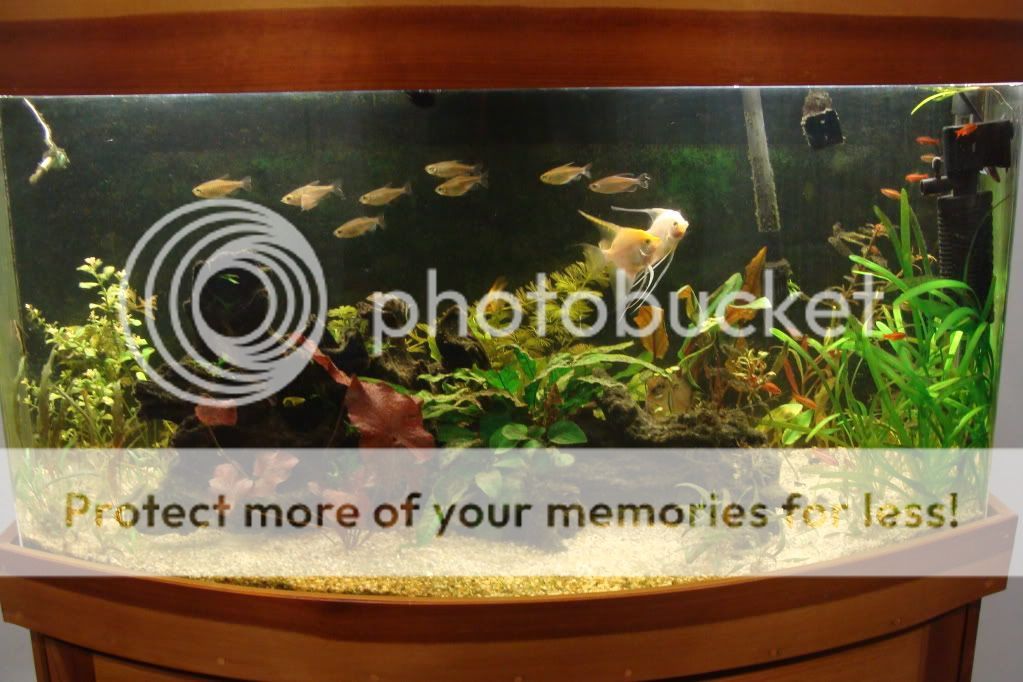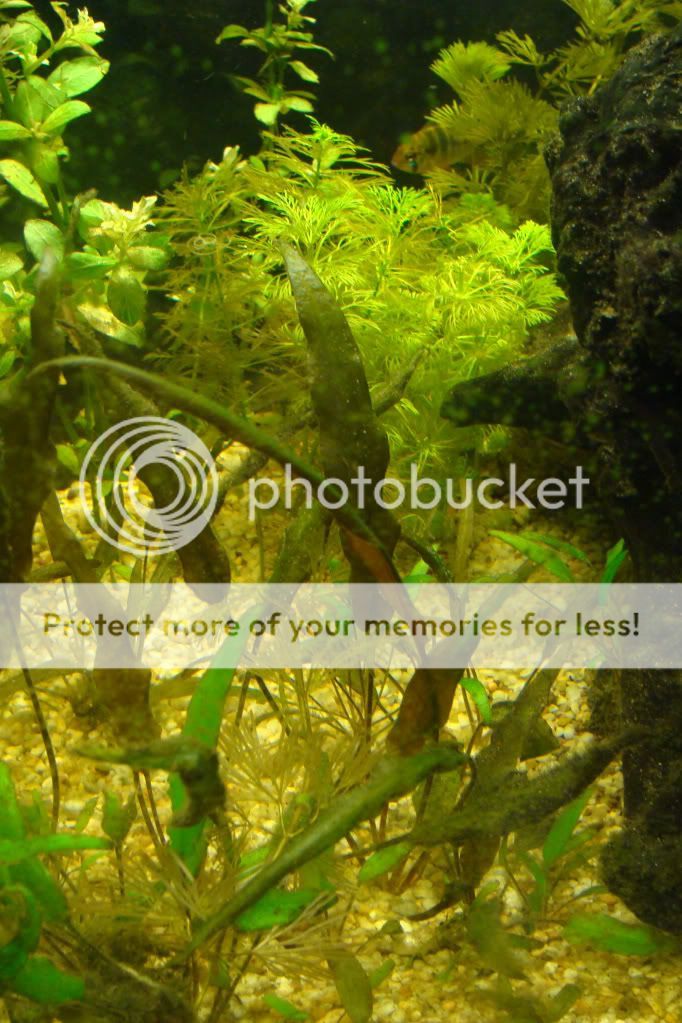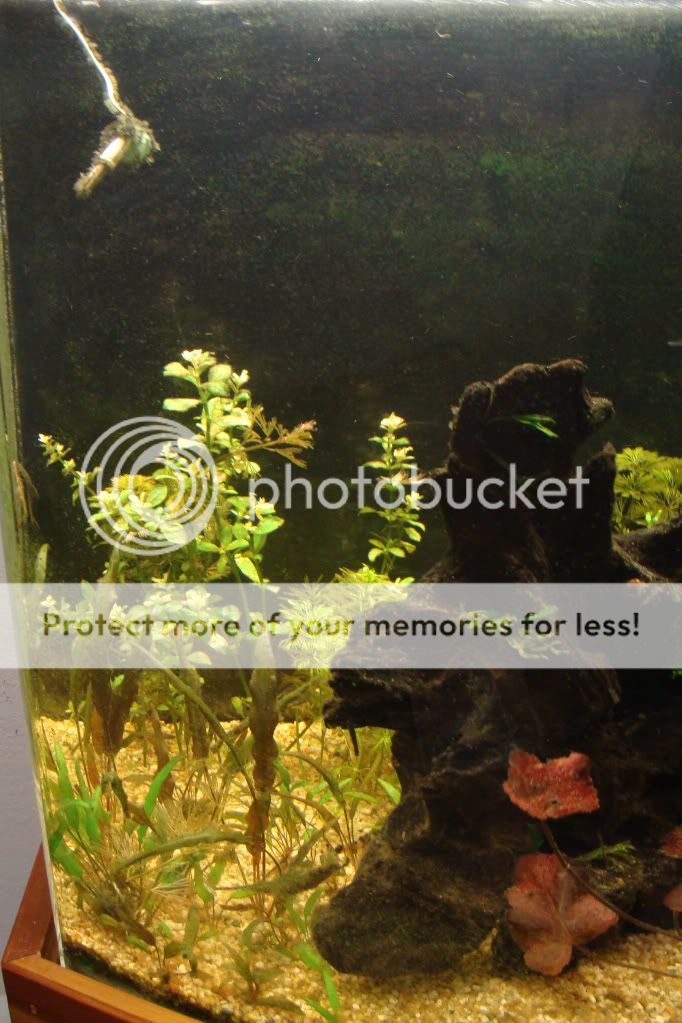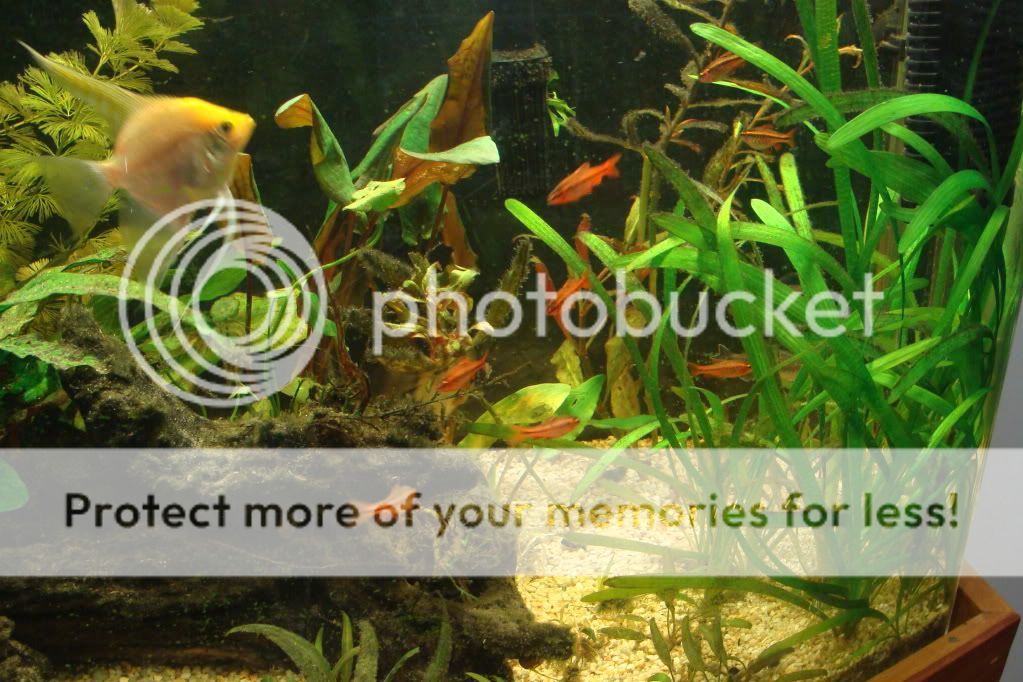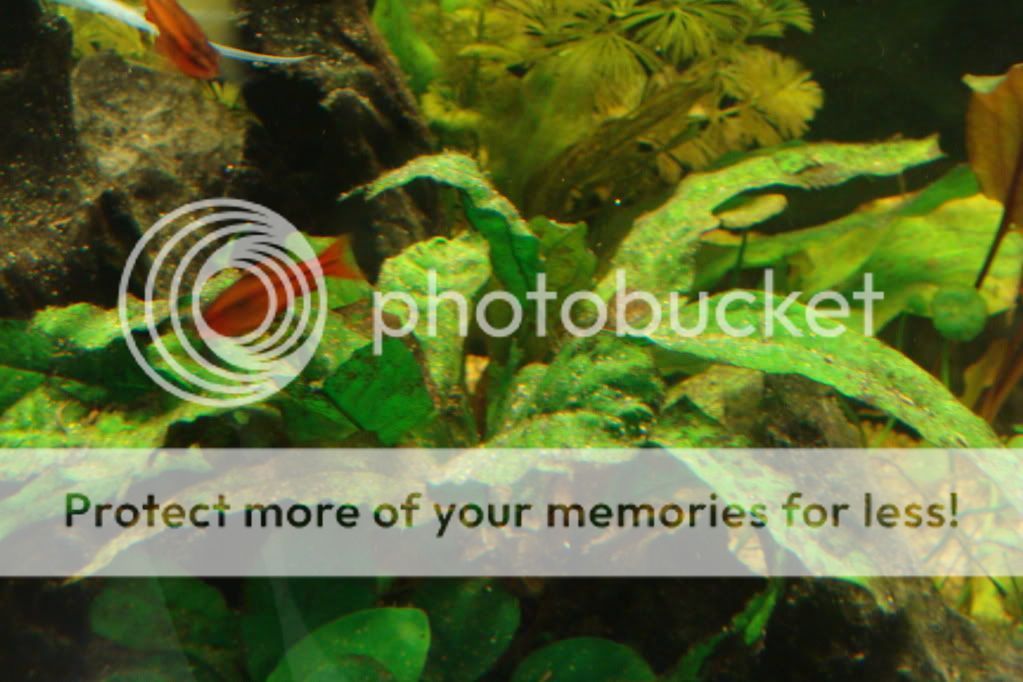SuperColey1
Planted Section
I would still like to know though what to do with my T5s: should I take 2 10000 o 2 6500 K? In the back I have 2 4100K...
Well 30W + 28W = 58W over a 50 USG. That is low light whether it is T5HO or not. however if it were my tank and T5 or T8 standard (NO) was easily available I would get rid of the lot and get 2 x full length (not T5HO)
That would probably be 4ft? So 2 x 32W T8 or 2 x 28W T5 (Normal Output)
That would seem like more light but it will take away the difference in each area of the tank, spread things a little more and reduce the intensity overall IMO.
Andy prefers a lower K rating over his tank. I think plants look better with a higher K rating. Nothing higher than a 9000k though.
Its not that. 8/9/10000K is a white light with a tinge of blue. Not hugely different from each other to our eye. Many scapers like the 10000K. The ADA lamp is 8000K. Not my cup of tea. I like clean crisp white with no tinge so I stick to 5500K. 6000-7500K is white with a green tinge and low K is the pink 'supposed' best for plants tubes in the 3500K - 4500K range. I want pure natural colour. No 'enhancing' fish or plants colours. I want the clea, crisp, actual. Reality rather than 'enhanced'
Now the really low K's 2000-3000K are the yellow 'beauty' lights which the UK seems to think are great as room lighting. Very ugly over a tank (and in the room) IMO.
Andy will probably explain PAR better than me, i'm gonna reference this description actually lol, its about the light spectrum, and PAR stands for Photosynthetically Active Radiation.
In the same way fat provides the most efficient calories for humans................
Lol where is the PAR info Ian. That is the marketing blurb that comes on most aquarium lamps but not on shop fittings. Reason is that the 'spectrum is not going to influence the shop fitting buyer
Notice they show you just the photosynthesis ranges in nM!!!! Why not show us the detail outside of the range too if we are talking spectrums. How much UV etc.
Basically those graphs are made to say 'Our tubes are perfect for X' PAR test other non aquarium tubes against that tube until you reach an equal reading and then test the 2 over plants. You won't see any noticeable difference in growth.
Yes some brands have higher PAR than others. That is a quality issue. However those Spectrum Graphs are just showing you what colouration the tube gives out with no detail of quantity of light.
PAR is a measure of how much light there is within the photosynthetic range. You could have 2 lights with that identical 'spectrum analysis'. They both say gives out X amount % of red and X amount % of blue however % of what total. 1 tube may be 50 PAR and the other 100PAR. That renders the percentages worthless. they are both the same on the graph but one is 2x better!!!
PAR would be a simple number however unlike Lumens where the customer wants to know a number that is being emitted FROM the light. We want a PAR measurement received at X point. Therefore if the manufacturer/retailer puts a PAR figure on their tube saying emits 1000PAR that is again worthless to us. Great 1000PAR at the light. How much at the water surface? How much at the substrate. Are both tubes that emit 1000PAR delivering the same to the substrate?
Thats where it all gets a little complicated and everyone would need their own £250 PAR meter
At the end of the day a PAR reading for emission can suggest a light is giving out more light than another however that high emission may not be as penetrative and not give as high PAR at the substrate as the lower emitting light etc. Its all a number game here. lol. Very technical and something I'm pretty interested in, smoething I'd like to really get my teeth into but not something that I can justify £250 on. lol. I would buy a new tank instead if I had £250 spare
The 2 T8 I have are Dennerle 4000 K with UV-Block (against algae). The T5s are bought locally and don't have the info required. I understand though that you need lamps in the range of 4000 to 10000 to have a good PAR, especially the 4000, 6500 and 9000-1000.
In that sense I would be doing ok...
Lol Our good friends at Dennerle and their 'up to date' beliefs. lol. Sidetracking I know but I must rant.
Dennerle seem to have some very strange beliefs based on old myths that nearly everyone these days knows are myths yet they still push them and somehow are still one of THE big name brands in this hobby.
I get on to this because of the statement of with UV-Block (against algae) in your post above.
Firstly algae is a plant. what is good for plants is also good for algae. UV is bad for humans, it is bad for plants and yes it is bad for all life in general including algae. This is why if you use a UV steriliser (which basically a UV lamp over a tube of water) it.........kills algae spores. Therefore if you block UV then thats great but why claim it has anything to do with algae? It will stop the plants and fish being burnt by the UV but the same will be true of the algae. A pointless claim and not even a reasonable one!!!
They also suggest that you should turn your lights out for 2 hours to emulate tropical thunderstorms and this will help avoid algae. This is even more laughable.lol. The 'siesta is not meant to emulate thunderstorms nor does it help avoid algae. The only reason the siesta can help 'and there are far more that will say it does nothing at all) is if DIY CO2 levels are weak and you turn the lights off it gives the CO2 a chance to build again for a second burst.
The truth however is CO2 is critical in the first few hours and lesser later in the photoperiod. Plants will close up when they have had enough light. Why try and make them do 2 rounds in a day when they are supposed to do one. lol. I'll stop ranting about Dennerle there. Their products aren't too bad but their marketing department are on the 'happy pills' and working double overtime
On the subject of your tubes. The Dennerle's are 4000K which is 'supposed' to be the best range out there although one of the ugliest appearances aesthetically. Dark purple towards yellow/Orange but good.
Some will say the 6500K (green) is useless as plants can't use yellow/green light but many (including myself) have used purely 6500K with the same results as the 'supposed' ideal range pink lights.
Onto PAR and ranges. This is pretty difficult to sort the truth from the myth really. It is likely that if you used a purely marine light setup (actinic) that you would still have fine plant growth but the effect would be of using less light in that there would be less light given off by these tubes in the usable PAR range. However they will not cause algae unless the plants are suffering just as the case is with 'ideal' ranges. Light is light and plants are adept at adapting theirselves to do what they can with what they have. A little like modern humans should be and then the world would be a happier place. lol
Within the 4000 - 10000 range the PAR will still not be consistent. Some tubes are better than others even if they are the same tube from the same manufacturer. Some manufacturers are incredibly different where I saw a test recently where 2 brand new tubes, same wattage, same K rating and same CRI gave 30% difference in PAR and that is a lot considering the K rating is suppose to be a 'defining' statement of quality as is the CRI. These were both high end, top brand tubes but different brands.
That shows you how much those graphs mean!!!!
Just in case you really want to see how difficult this subject is to sort then read the following link. There are 2 people here that are debating, one called Defdac from the perspective of the Importance of K ratings and one called ceg4048 from the perspective of the NON importance of the K rating.
Thes are both highly respected people on the more technical issues of the hobby yet 2 different opinions on the subject. Ceg4048 comes from the perspective that I see from what I have used and tried and agree with.
It is 5 pages long but well worth the read and you have to wait for the very end for the best remark from our man in the know which is:
If you want real pretty reds, just buy Tom Barr's "Red Plant Paint" and get a brush.
http
 /www.barrreport.com/showthread.php/4768-K-rating-on-bulbs-and-Plants.
/www.barrreport.com/showthread.php/4768-K-rating-on-bulbs-and-Plants.So the summary:
4,5,6,7,8,9,10K is fine Higher still probably fine. But try to get full length and try to get equal spread.
You also have higher turnover than me and I have way more light
AC



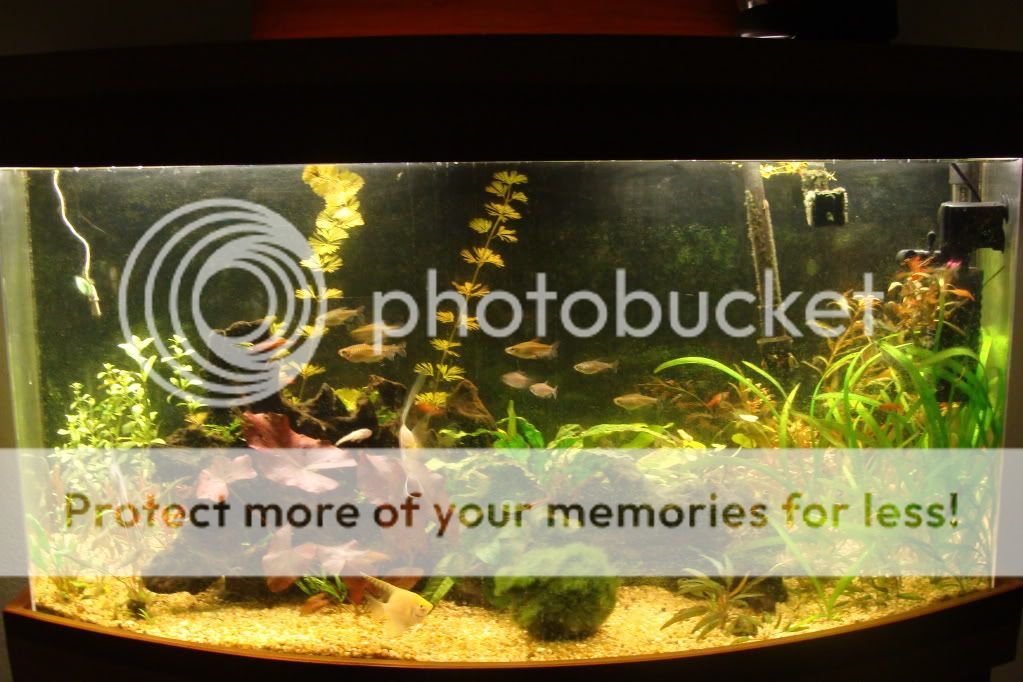
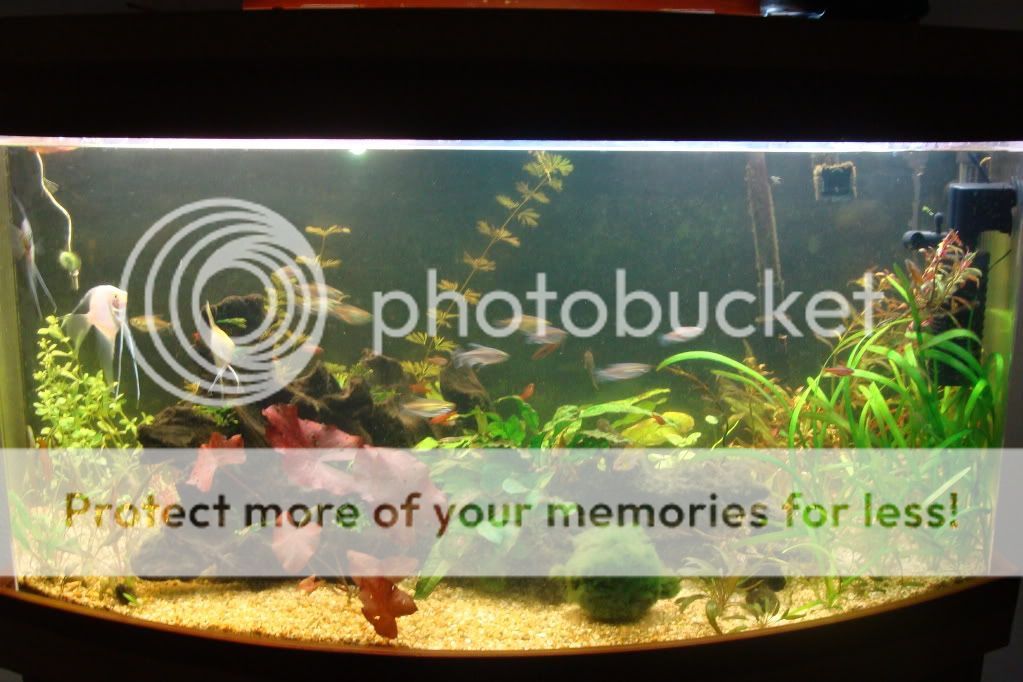
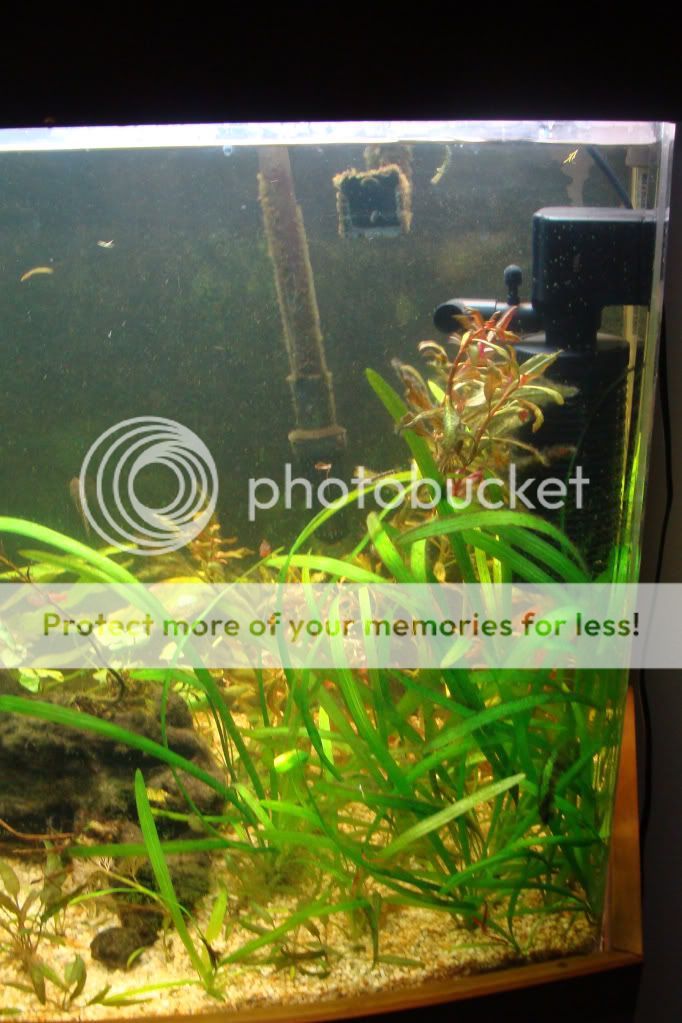
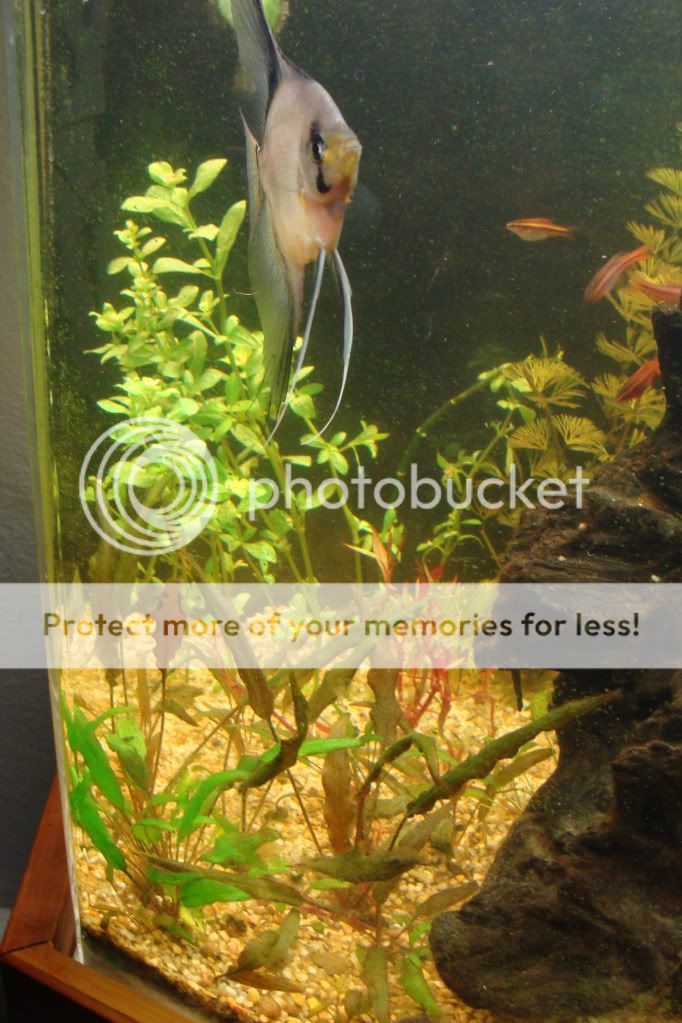
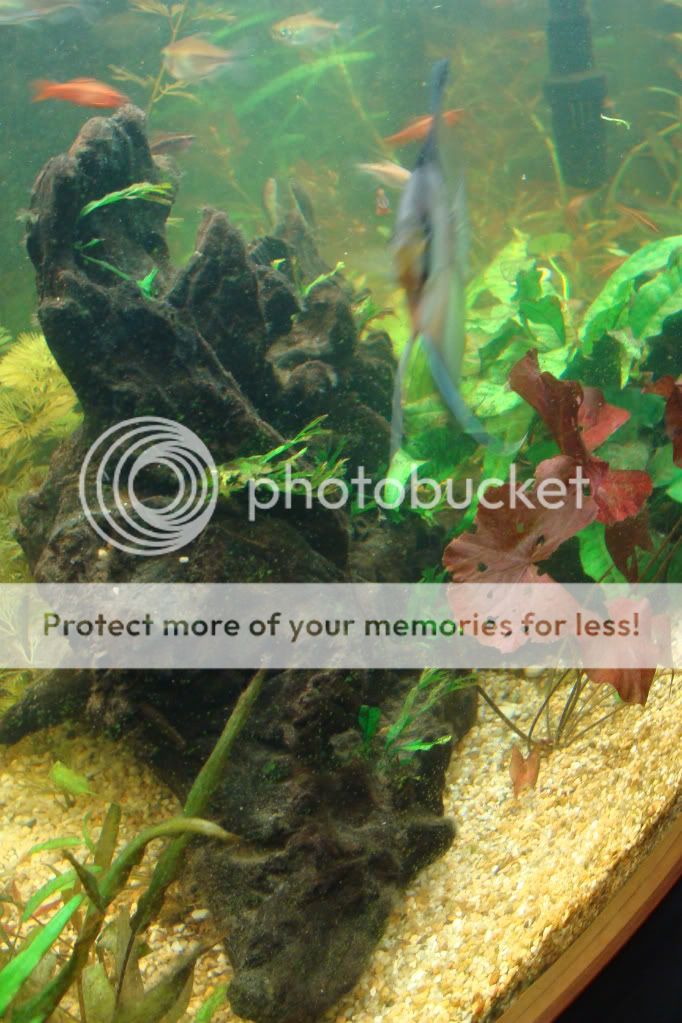
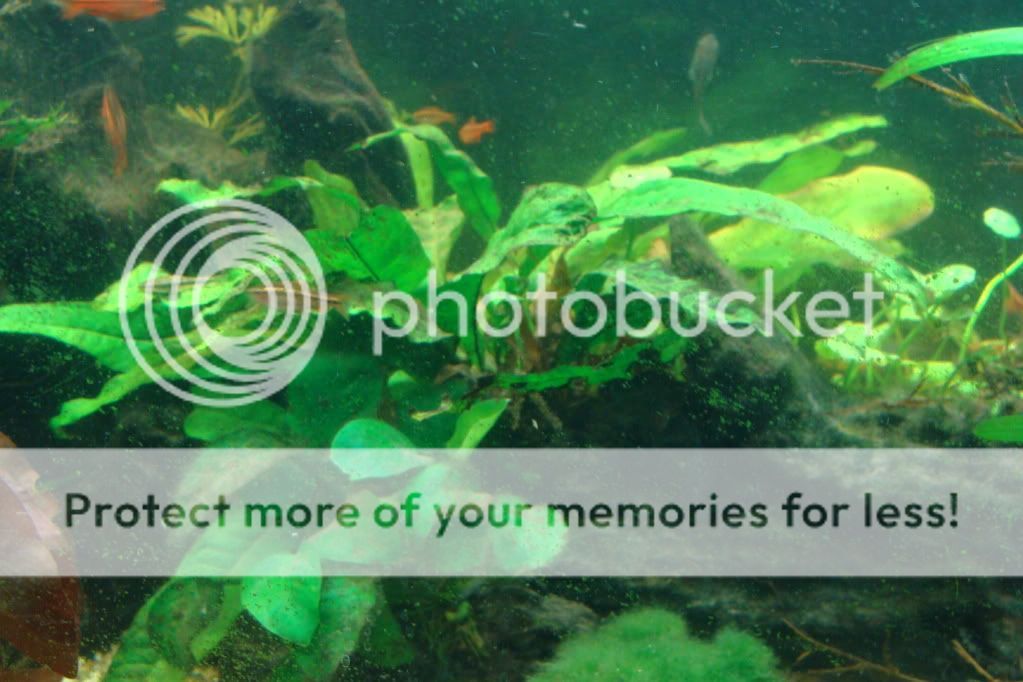
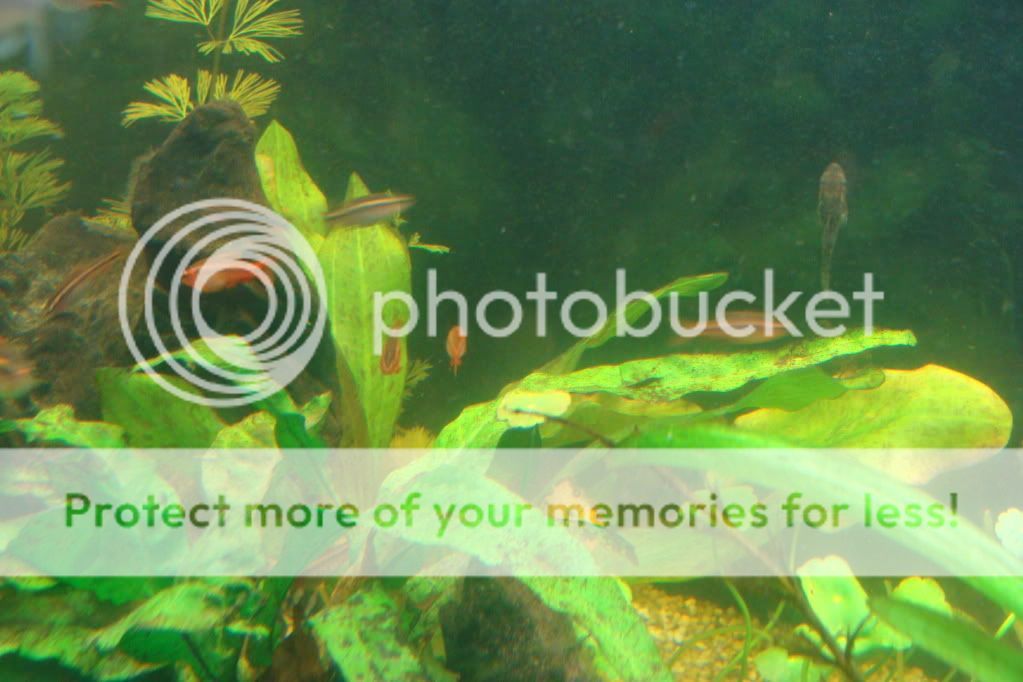
 Does anybody know what the holes in the leaves could have caused? Snails? I do have some despite the loaches...
Does anybody know what the holes in the leaves could have caused? Snails? I do have some despite the loaches...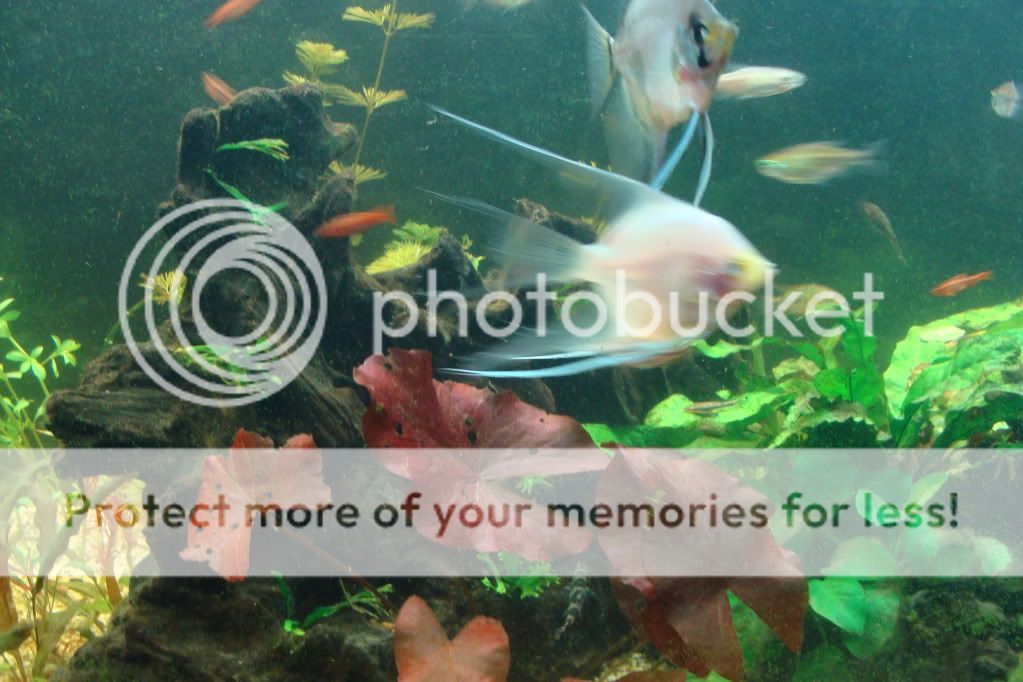
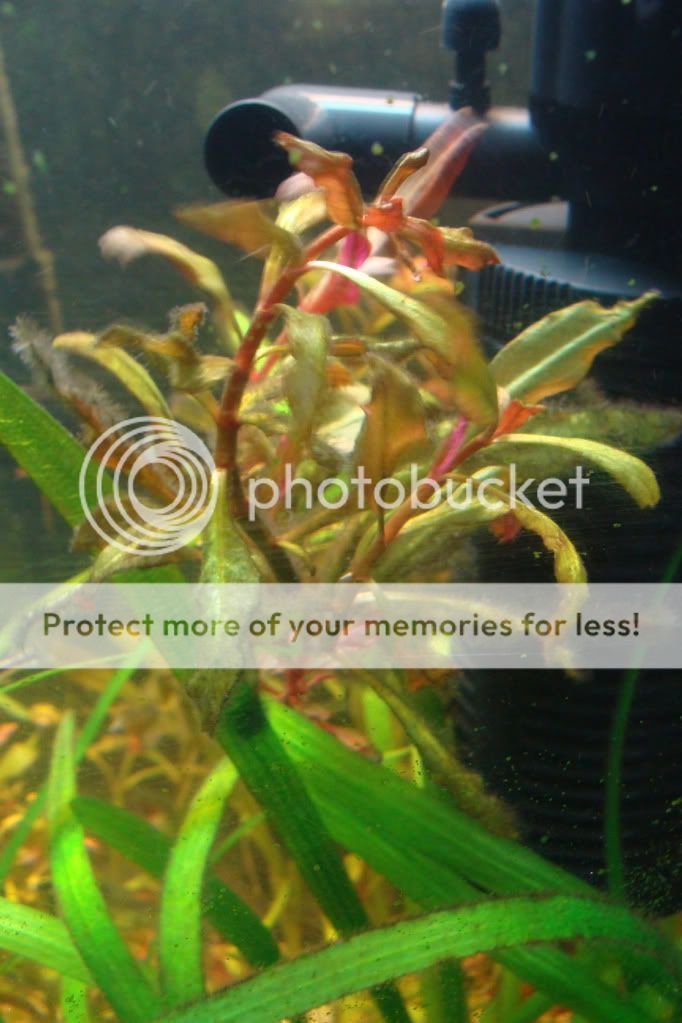

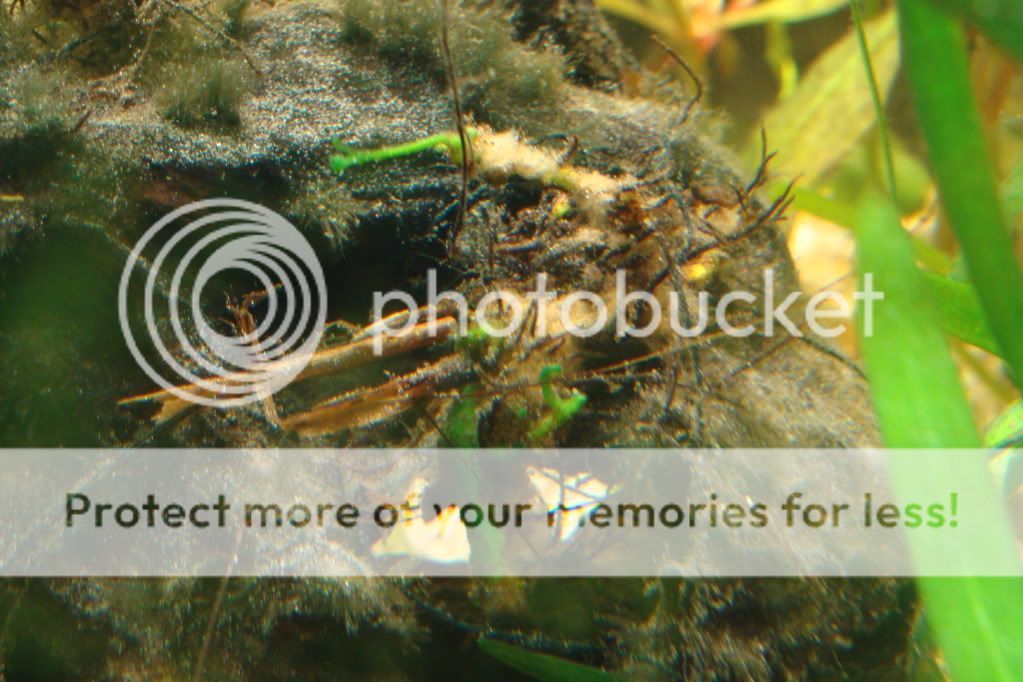
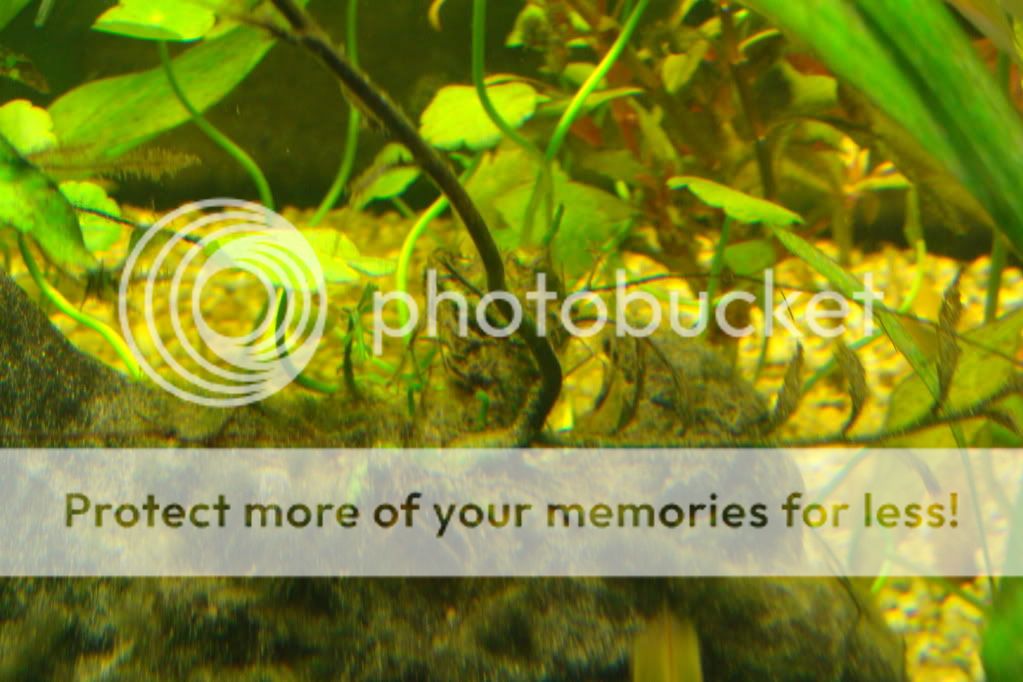
 The hydrocotyle looks great though. Everybody says it's an algae magnet. I never found that to be the case.
The hydrocotyle looks great though. Everybody says it's an algae magnet. I never found that to be the case. 